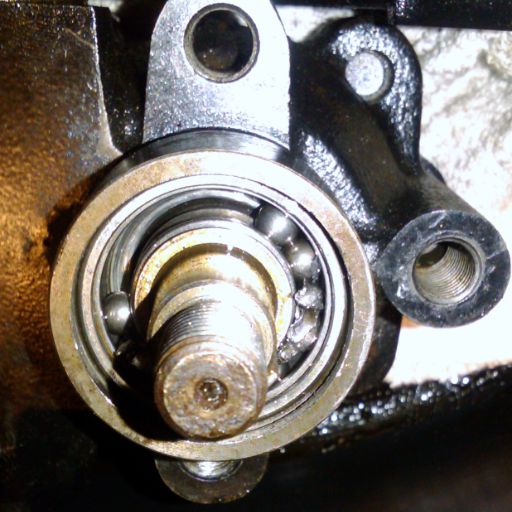Power steering systems are vital for effortless control and precision on the road when driving a vehicle. However, power steering systems can have issues like any other mechanical component. One of them is an unusual whining noise. If you notice this sound while steering your car, there could be a power steering pump bearing problem. Understanding the causes, symptoms, and solutions can help resolve the issue before it aggravates into severe damage, which is more expensive to repair. This article guides you on identifying and troubleshooting a whining power steering pump bearing.
What are the common signs of a bad power steering pump bearing?
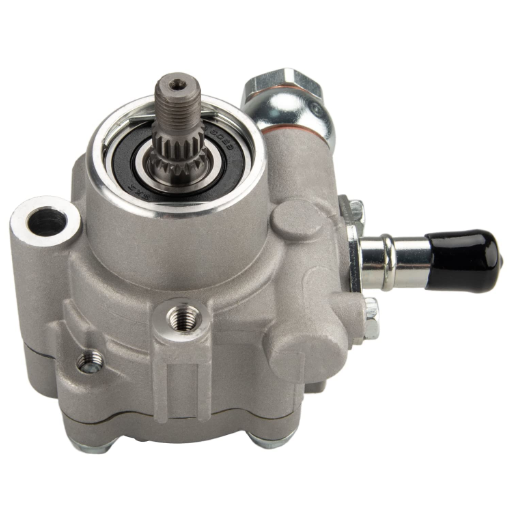
Unusual whining or squealing noise when turning the steering wheel
Hearing bizarre whining or squealing sounds while turning the steering wheel often indicates the Power Steering Pump Bearing is failing. This type of noise effectively made is also commonly called “Knocking, cracking, or grinding,” indicating too much friction or wear inside the bearing due to insufficient lubrication, contamination, or wear and tear over time. This issue, if not fixed, will affect the greater steering system functionality. Here are some of the key technical parameters impacted:
A worn bearing may cause irregularities in the pump’s Operation. A renowned bearing usually generates a notable difference between the pump’s rotational movements. This means that the pump’s workings are not consistent, which leads to a reduction of hydraulic pressure.
Regarding the power steering system, the rights to speak are relayed: When the bearing is damaged, the steering considerably stiffens.
If a Bearing Issue causes noise, It Can Cause Belt Misalignment. Notch wear on a drive belt bearing can eliminate the optimal level of tension and lead to misalignment, which is quite dangerous for a vehicle.
Address the problem immediately, as failure to do so can damage the goods further and undermine the proper safety measures while operating the vehicle.
Difficulty in steering, especially at low speeds
Struggles with steering, particularly at lower speeds, indicate something wrong with the power steering or one of its components. I would start remedying the situation by checking the power steering fluid level. A low fluid level can result in a lack of hydraulic pressure, making steering difficult. Another possible reason could be a failed power steering pump, leaving the system with insufficient power to steer the vehicle effectively.
Hydraulic Pressure: There is sufficient pressure; however, too much fluid or pump failure can cause the wheel stems to lock viciously.
Pump Efficiency: When too much is worn or damaged, these allow the utmost thrust of alluring the plates to lengthen.
Belt Tension: Too loose or misplaced drive belts and limiting the machines’ operational movements cause unpleasant maneuvering.
Steering Gearbox Condition: It becomes feasible for it takes too much restricting force to be exulted on binding screw propellers frequently warded at the steering box.
These factors indicate essential problems that require addressing to resolve the matter and ensure safety when driving the vehicle.
Leaking power steering fluid
Simply put, leaking power steering fluid is trouble, and if we wanted to get technical here, I would concentrate on the following aspects:
Hydraulic Pressure: The basics of physics tell us that we can not create or destroy energy. This means that leaking fluid directly reduces the energy available in the system, which in this case is hydraulics. Reduced hydraulic energy levels mean worsened steering ability.
Pump Performance: Without sufficient fluid, the pump may overheat or wear out due to low lubrication. In the long term, that significantly reduces the system’s energy efficiency.
Steering Gearbox Condition: Minimal fluid is required, as too much fluid can create air pockets that fuel friction within the gearbox, thus creating a more jerky alter movement.
Each of these factors pertains to each other in some way and, together, directly impacts power steering functionality. The type of system outlined above performs numerous interconnected functions, ideally running with some elemental interference. Addressing these issues when a leak is observed significantly helps control damage and allows for effective system functioning.
How can I diagnose a failing power steering pump?
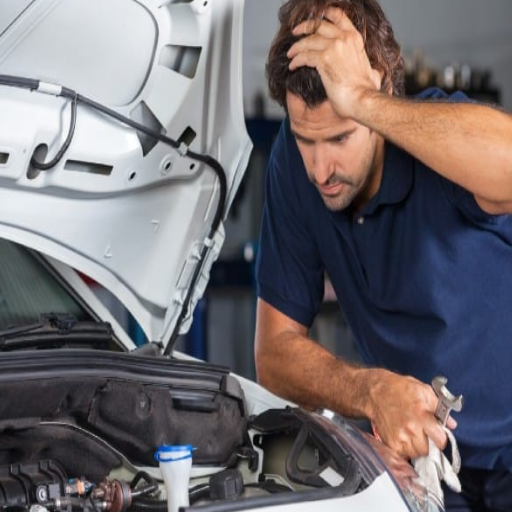
Check the power steering fluid level and condition
To start, find the power steering fluid reservoir, which is usually marked and next to the power steering pump. An initial inspection is performed by checking the fluid in the reservoir with the dipstick. The level indicated should be between “MIN” and “MAX” markers, as there may be a leak somewhere in the system. Moreover, check the fluid; it should look clean and clear or reddish depending on the type. Looking for clues that point to the overheating issue? If the fluid is dark, discolored, or smells burnt, it is time to flush the entire system.
Fluid Level: Keep the fluid level between MIN and MAX marks for cavitation-free operation of the system.
Fluid Color: Clear or reddish fluid is acceptable, but the situation should be taken seriously if the fluid is dark or black.
System Pressure: Ensure system pressure matches the manufacturer’s requirements (e.g., 900-1100 psi for most systems). Low pressure often indicates a failed pump or leaking components.
Presence of Air: Increased foaming or bubbles in the fluid can indicate air intrusion from leaks, restricting pump efficiency.
Regular monitoring of these criteria will help flag faults in a power steering pump earlier, allowing for prompt action.
Listen for bearing noise while turning the steering wheel
Hearing sounds while steering is essential in diagnosing problems with the steering system’s power of steering. If noise such as grinding, whining, or groaning is heard while turning the steering wheel, then that points towards power steering pump damage or, more so, bearing wear. These noises usually indicate high friction or failure to an internal component.
The noise is high in frequency and intensity. High-pitched or loud sounds going off consistently can indicate severe wear on the triggering device.
Steering Angle Dependencies: Check whether the pump makes noise while moving towards the end of the full lock (maximum steering angle). This may indicate strain on the pump or excessive wear of the bearings.
Timing of bearing activity and Pump Operating Pressure: Ensure pump pressure is within range, e.g., 900-1100 psi, and check the amounts of crude oil in the steering system. Also, note that abnormal amounts of pressure could increase the stress placed on the pump and activate the bearing.
By evaluating these various factors, you can eliminate the risk of facing bearing issues that are more repeated, hence maintaining proper reliability and steering performance.
Inspect the pump pulley for wobbling or misalignment
To examine the pump pulley, ensure it is free from wobbling or angular deviation. The pulley should spin and sit squarely aligned with the belt system. Straightedges and other alignment gauges can verify whether the pulley is parallel to the different parts. Any misalignment beyond the manufacturer’s recommended tolerances, 0.5 degrees or 0.1 inches laterally, can lead to belt wear, noise, or reduced efficiency.
Also, while the system operates at its recommended speed, the pulley may be an indicator. Between 800 and 1200 RPM, any considerable wobble may indicate that a hub is damaged or that there are worn bearings. As noted earlier, if wobbling is noticeable, check the acceptable range runout of the pulley using a dial indicator. The permissible range is less than 0.127mm or 0.005 inches. Addressing misalignment or wobbling promptly can help prolong belt life while ensuring reliable power steering system operation.
What are the consequences of driving with a bad power steering pump?
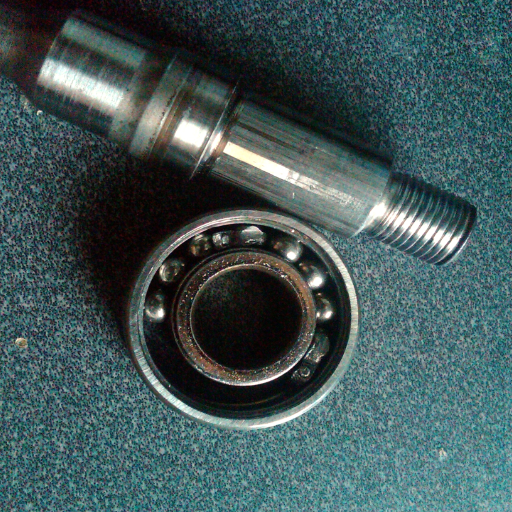
Increased difficulty in steering and potential safety hazards
Steering without a power steering pump is harsh, especially at lower speeds. Driving with a broken pump means much more work for the driver, as they simply lack hydraulic assistance. This may lead to no or less control over the vehicle, making performing simple maneuvers increasingly complex and dangerous in emergencies. Moreover, faulty steering pumps can cause some non-uniform or erratic steering, which adds to hazardous driving conditions.
Technically, an inoperable power steering pump does not provide adequate hydraulic pressure, which is supposed to be between 800 psi and 2,000 psi, depending on the specific automobile brand and model. If, for some reason, the recommended parameters are not being maintained, it is likely that the system will fail to operate correctly. Additionally, if the pump becomes frozen or springs a leak, it can drag or overheat the serpentine belt, creating further mechanical complications. Timing is critical to addressing such technical issues. Therefore, they should be resolved immediately to ensure safety.
Risk of complete power steering system failure
The entire steering system’s failure can stem from several connected problems within the system, like constant fluid leakage, failure of the pump, and damage to the steering rack. The fluid leakage, which faulty hoses or seals typically cause, can lead to insufficient fluid levels, compromising the needed hydraulic pressure and rendering the whole system useless. One significant technical parameter that must be kept under observation along with fluid levels is the hydraulic pressure, which usually ranges from 800 to about 2,000 psi, depending on the vehicle’s make and model. In such a case, the amount of pressure the system can provide the steering assistance through is less than required, causing a drop, and if relief is provided, the pressure assists by returning to balance to help the system not get stuck in a caught state.
Moreover, the malfunctioning power steering pump is another critical failure point. The symptoms usually include whining noises or stiff steering during the pump’s decline. In its fully broken state, the pump will stop fluid circulation. Additionally, If the pump is entirely out of order, the liquid circulation can cease, and pumping also puts excessive force on the serpentine belt. If left unrepaired, these doom more advanced stages of system damage in the escalating disorder of an interdependent nature, making these last unrepaired components the crowning fault. There is also the chance the steering rack is the problem. The steering rack can show signs of making turning the wheel feel stiff or unresponsive. Maintaining these components regularly serves as the best prevention from such catastrophic loss of control.
Potential damage to other components of the power steering system
Untreated issues within a power steering system have the potential to cause severe damage to different components, significantly affecting the performance of the vehicle and creating safety hazards. Here are a few key components that may be affected, along with other considerations:
Serpentine Belt: A power steering pump that is seized will significantly increase the resistance in the system and lead to more stress being placed on the serpentine belt. A breakdown of the serpentine belt will not just fail the power steering system; other essential systems in the car, such as the alternator and water pump, can also be disabled. The recommended tension for these belts is typically between 100 and 170 lbf, and these values should always be checked during routine inspections so they can be corrected immediately if necessary.
Hydraulic Lines and Hoses: Power steering pumps operate the hydraulic system within a range of 800 to 1,200 psi; any number above that can lead to excessive pressure build-up. This can significantly weaken or break the hoses and automatic steering fluid reservoirs. The broken components can lead to low fluid levels, contaminating the system and degrading performance.
Steering Rack and Pinion Assembly: A bad steering pump puts excess strain on the steering gear, resulting in internal seals and gears wearing out. Additionally, the internal wear affects the system’s ability to maintain adequate hydraulic pressure for appropriate steering. These assemblies’ operational ranges are usually near a few thousandths of an inch, which the manufacturer usually recommends, ~0.0025″.
Reservoir: Component failure usually causes clogged reservoirs and filtration systems, resulting in degraded or contaminated power steering fluid. Power steering fluid viscosity can be kept at the desired value through periodic changes, which occur at intervals recommended by the manufacturers, e.g., 50,000 miles.
With proactive vehicle maintenance, vehicle owners can minimize the impact of power steering system failure while avoiding expensive power steering repairs. Technical tools like pressure gauges and serpentine belt tension testers can ensure that parts function correctly.
How do I test my power steering pump for bearing issues?
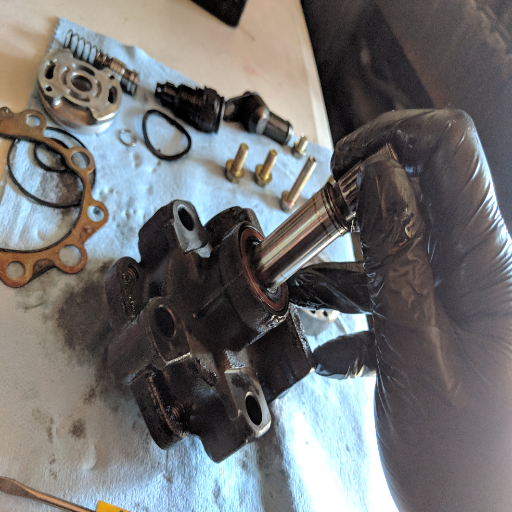
Use a mechanic’s stethoscope to isolate the source of the noise
My answer here is straight to the point: I would start with the vehicle running and the power steering engaged. While using the mechanic’s stethoscope, I would place the probe near the power steering pump, housing, or even the shaft, allowing me to listen for abnormal sounds, such as grinding or whining, which usually demonstrate bearing problems. If the sound does come from the pump bearings, it can significantly affect other technical factors such as:
Efficiency of the pump: When bearings fail, the pump may not be capable of supplying adequate hydraulic pressure, which would significantly impair steering.
Pressure levels in the system: A defective bearing typically causes an erratic range of pressure that deviates from the manufacturer’s parameters, such as 1,000 – 1,500 PSI for several systems.
System temperature: Defunct bearings increase friction, which increases temperature and can damage fluid and wear other components.
Once identified, immediate measures to rectify the problems dramatically reduce the damage to the power steering system while ensuring the car operates within safe operating limits.
Perform a pressure test on the power steering system
To pressure test the power steering system, I would ensure that the correct fluid is in the system and that the vehicle is on level ground. Next, I would attach the gauge, which has been calibrated for hydraulic systems, to the power steering pump’s high-pressure line. Upon starting the engine, I would turn the steering wheel in both directions and check the gauge for any pressure response.
If the pressure is out of range, there are negative impacts such as a failing pump, clogged hoses, or problems with the hydraulic pressure regulator. To solve these issues, symptoms should be analyzed. These symptoms can have the following effects on technical parameters:
Loss of Efficiency: If the pressure goes below acceptable levels, there can be problems with steering, which is dangerous from a safety perspective.
Operating Temperature Increase: Overheating, coupled with decreased fluid flow, increases the likelihood of seal and fluid breakdown, further damaging the system.
Arbitrary Shifts in Steering: If stairstep-like pressure shifts are implemented, probabilistically poor steering control will negatively impact vehicle control.
Pressure results should be noted and compared to manufacturer-provided specifics to identify the issues precisely.
Check for excessive play in the pump pulley
To determine excessive play in the pump pulley, I will manually check it with my hand to see any looseness or odd movement when I wiggle it from side to side. Excessive play could mean that the bearing is worn or there is an issue with mounting. If this condition does exist, it can have a direct impact on the following parameters:
Reduced Efficiency Of The Pump: A loose pulley can cause the drive belt to slack or slip too much, reducing the hydraulic pump’s ability to maintain fluid pressure.
Accelerated Wear of the Belt: Stepped wear or premature failure of the drive belt due to slack in alignment shafts or bearings.
Noise and Vibration: A worn or loose pulley can cause excess noise and vibration, harming the hydraulic system’s overall operation.
All of these reasons lead to a decline in the system’s overall reliability and functionality, and therefore, excessive play must be addressed promptly.
Can a bad power steering pump bearing be repaired, or does it need replacement?
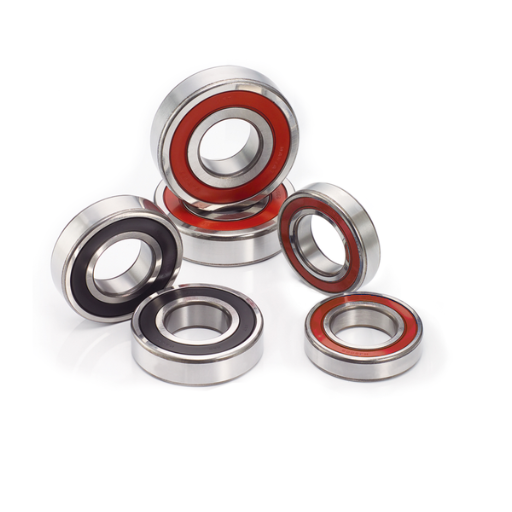
Evaluating the extent of bearing damage
To assess the level of damage to the bearing of a power steering pump, I would begin by checking for unusual wear, high noise levels, or excessive pulley play. If the bearing appears to be worn very little, it might be possible to resolve the issue with lubrication or minor adjustments. Still, severely worn bearings will usually have to be entirely replaced.
If the damage is extensive, the relevant technical parameters would also comprise the following points:
Deteriorated Pump Efficiency: A severely worn bearing can lead to off-center pulley operation, which results in loss of belt tension and decreased hydraulic pressure in the system.
Accelerated Wear of the Drive Belts: A damaged bearing will also cause misalignment, which leads to lateral bending stress on the drive belt, making the belt wear faster than usual.
Noise and Vibration: Defective bearings produce excessive noise and vibration, damaging surrounding parts and system components.
With the known medley of problems, the remnants of worn-out bearings must be dealt with immediately, as delaying action could burden the expenses and erode the hydraulic system’s reliability.
Comparing repair costs vs. replacement costs
In analyzing the cost of repairs versus replacements, I would evaluate the condition of the bearing alongside its effect on the system. If a repair is less expensive than a replacement approach and the damage is minimal, a repair is the more economical solution. However, if there is considerable damage to the bearing, replacement is a more reliable and practical approach to maintaining the system’s integrity over an extended period.
Replacing the microphone is valid if there is some damage to a system’s technical parameters. Below, I highlight some of these criteria:
Decreased Pump Productivity Efficiency Incessant problems stemming from a worn-out bearing will cause the pulley to work inefficiently and reduce the hydraulic system’s performance.
Increased Rate of Wear for the Drive Belt Takeover exertion and irregular tension from a damaged bearing can severely jeopardize the drive belt’s working life, necessitating replacement.
Barring low noise and vibration dynamics, the dynamics of an erroneous bearing exceed the norm, eventually destroying other parts and increasing repair expenses.
Therefore, it is best to replace such components instead of trying to repair them. This preserves a system’s performance, prevents extended system failures, and reduces bottom-line expenses. Proper diagnosis and involvement in ensuring reliable operation within the needed timeframe are essential.
When to consider replacing the entire power steering pump
Upon judgment of replacing the entire power steering pump and bearing in the cover issues range, along with their effect on the system’s technical parameters, I tend to focus on the severity of the problems at hand. When the pump is underperforming and directly impacts the system’s performance, it is often better to replace the entire unit instead of continually repairing individual components. In particular, I ask myself whether the pump suffers the following injuries:
Consistent Fluid Leaks – Constant leaks suggest internal complications. Therefore, repairs would be futile, whereas a replacement would be a better alternative.
Low Hydraulic Pressure—Deficient pumps tend to lower system pressure, making the vehicle impossible to handle, and with poor handling come dire consequences.
Unusual Noises – Grinding and whining indicate significant internal damage and wearing issues beyond repairs.
Overheating – Constant overheating within the pump can significantly hamper system efficiency by damaging seals down the line and bearing along with other components.
When considering all of the parameters above, it is demonstrated that it is more economical to take everything into account alongside the reliable performance power customers do pain saving on mounting repair costs spent over time.
Frequently Asked Questions (FAQs)
Q: What symptoms indicate that the power steering pump is faulty?
A: It can sometimes be tricky to pinpoint signs of a faulty power steering pump, but one of the more common clues is difficulty steering, especially when turning the steering wheel at low speeds. Other signs could be whining or groaning noises, squealing, fluid leaks, and jerky or stiff steering wheels. If you are experiencing any of these symptoms, having your vehicle’s power steering pump and system checked by a specialist is strongly advised.
Q: How do I know if the bearing on a power steering pump is failing?
A: A common characteristic of a bad power steering pump bearing is a whining or grinding noise that occurs when turning the wheel and increases in pitch when the wheel is fully turned. Some people notice it more when the engine is cold, and for others, it is even when idling the car. If you use a mechanic stethoscope or a long screwdriver to listen to the pump while the engine is running, you can hear and pinpoint the source of the noise.
Q. How does the sound of a decaying power steering pump audiogram record?
A. ” The sound produced by a worn-out power steering pump may be described as a whiny and high-pitched sound or grinding noise amplified when the wheel is turned. At times, the sound produced could be rhythmic or sporadic and sometimes accompanied by a vibration felt in the steering wheel.”
Q. Does the inadequacy of the power steering fluid create noise in the bearing?
A. The answer to this question concerns the quantity of power steering fluid used and whether that alone can create noise in the bearing. Noise translated to can go back must be slightly controlled in quantity, not to exceed the limit of being annoying. However, it can lead to specific damage within the power pump itself if ignored. Pumping grooves sustaining the power charge must be able to intake the lubricant adequately to reduce the friction generated by the moving parts. Over time, if these parts are neglected, you will be met with annoying noises instead of the bear’s angle.
Q. How does the steering behave in a car with a power steering pump that is not functioning?
A. Signs of a faltering power steering pump working would include having a tight steering wheel along with additional effort required to turn the wheel. Power to assist steering the electric and hydraulic units would be significantly diminished, making the steering extremely stiff. Further, the pain will not only ensue because of the struggle to turn the steering wheel but also because the severity or intensity of pain will range from low to moderate. Ideally, the supporting elements of a vehicle would have preferred a smoother mechanism, which is virtually impossible if the power steering doesn’t function properly.
Q: Where can I find some of the best posts or articles about problems with the power steering pump?
A: Articles and posts discussing power steering pump problems can be found on Auto DIY YouTube Channels. Quora also has Users willing to share their experiences. Mechanic Forums and DIY community pages are brimming with information from skilled mechanics and DIYers. Additionally, brand-specific forums discuss specific vehicle models at a more granular level.
Q: How can I confirm whether the power steering pump is terrible without removing it?
A: You can check if the power steering pump is terrible by carrying out a few tests. The first thing you should do to troubleshoot is look at the condition and the level of the power steering fluid in the reservoir. That could also be a red flag if you hear strange or unwanted sounds while turning the steering wheel. Using a pressure gauge to check the pump’s output pressure is also advisable. It would be wiser to contact a well-known mechanic for more complex issues.
Q: When am I supposed to change the power steering pump?
A: Changing the steering pump should occur when there’s a clear indication of malfunction, like constant sounds, fluid leakage, or steering my car, which becomes a hassle. Regular servicing, including checking and changing the fluids per the vehicle’s specifications, can increase the pump’s life. If there are any problems with the power steering system, then have it evaluated by a professional so that they can assess if there is a need for a replacement pump.

